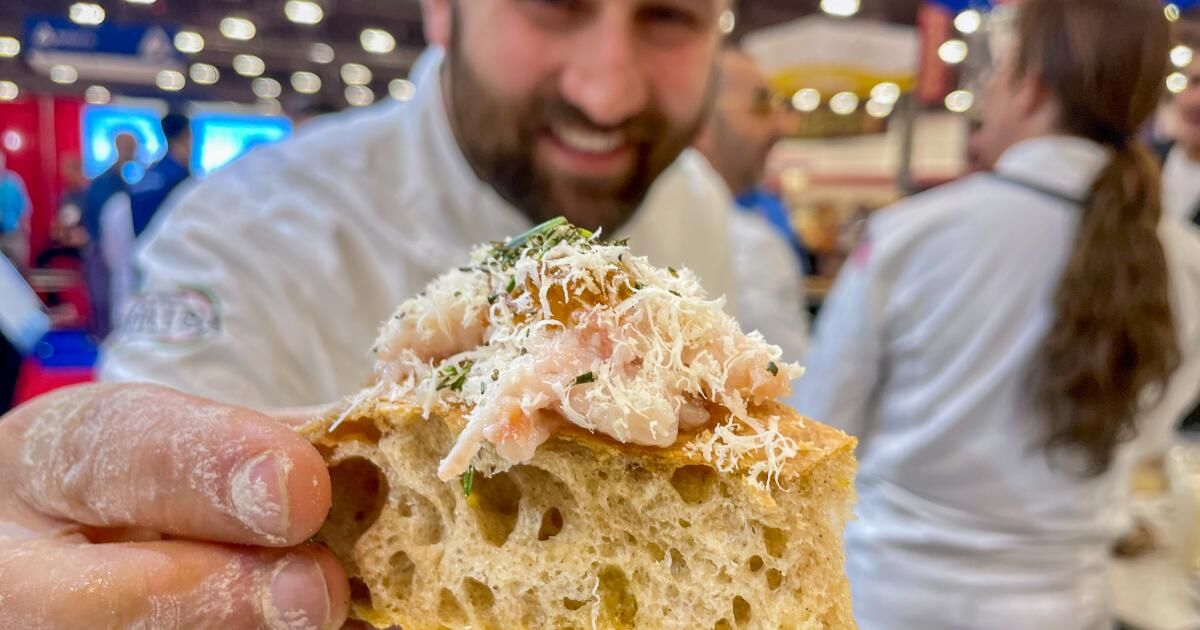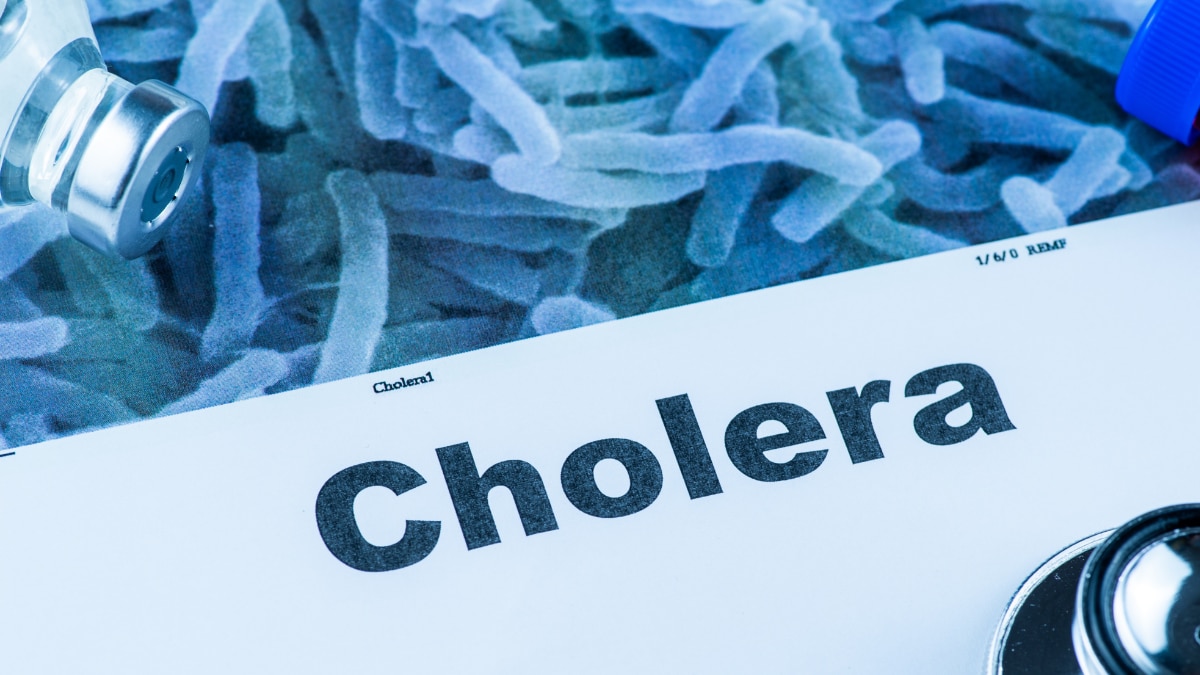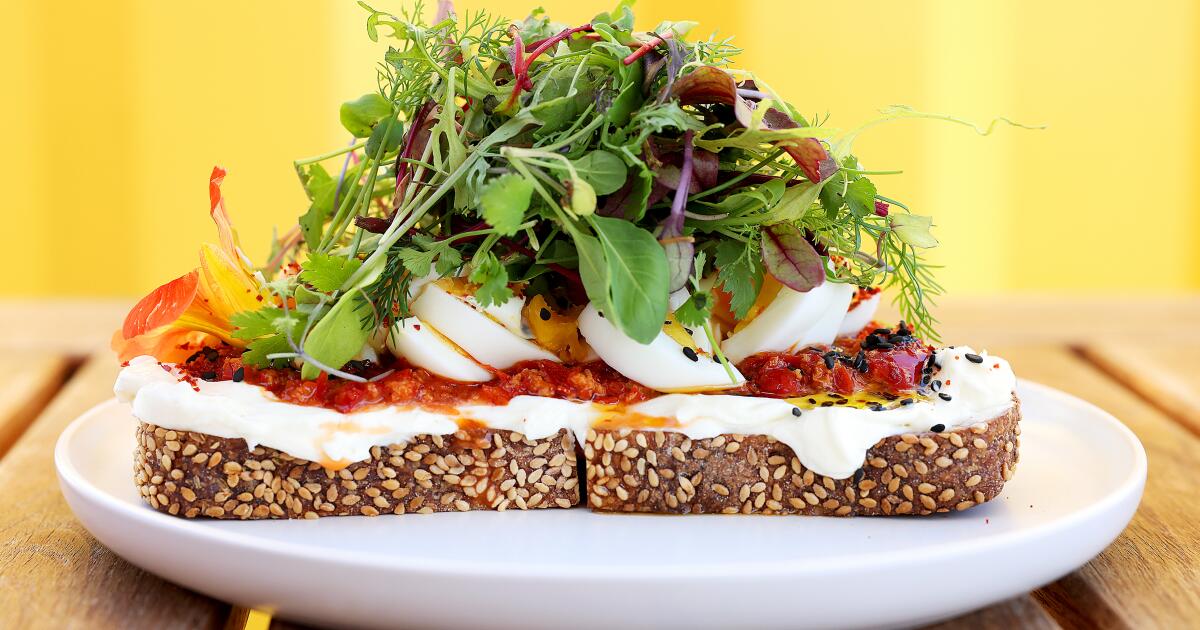When Daniele Uditi was 9 years old, he remembers hearing voices at 4 am. He was at his childhood home in Caserta, Italy, and had just woken up to get a glass of water.
He walked around the house, trying to identify the source of the sounds. She finally found her family awake, chatting and laughing in the downstairs basement. Like many families in the Campania region, her aunt had an oven in the basement where she made bread.
“I used to wake up and see my whole family having fun mixing dough by hand in a wooden bowl,” says Uditi. “I started staying with them and playing. My slime was water and flour. I became addicted.”
Uditi is behind Pizzana restaurants in Southern California and Texas. He has developed a loyal fan base for his excellent and inventive takes on Neapolitan-style pizzas. Their cacio e pepe pizza, garnished with strips of parmesan cream and stuffed with cracked black pepper, is admired by diners around the world and often imitated. She is now looking to make a version of the focaccia bread that her aunt made in her family's basement. And what better way to test a recipe than by making it for thousands of pizza enthusiasts?
Focaccia nel ruoto by Daniele Uditi at the 40th annual International Pizza Expo in Las Vegas.
(Jenn Harris / Los Angeles Times)
I met Uditi last week at the 40th annual International Pizza Expo, a three-day pizza convention in Las Vegas. Vendors, pizza makers, restaurant operators and pizza lovers from around the world come together for three days of pizza contests and lots of pizza. Uditi is there with Rega, an Italian importing company that supplies many of the ingredients he uses in his restaurants.
He's testing three breads for a planned restaurant in Los Angeles that focuses on focaccia. The first is focaccia nel ruoto, a round bread stretched in olive oil, dipped in more oil and cooked in a pan. It's a darker bread, more wet sand than golden, made with a multigrain flour that includes sesame, rye, oats and barley.
“I am collaborating with Molino Casillo, which makes my flour barely sifted and very dark,” he says.
The crust is fragile and crispy, it is fried in oil in the pan until it imitates the exterior of a good donut. In the center the dough rises again with a fluffy crumb. There is an almost licorice flavor, with a rich, slightly sweet and nutty intensity to the dough. This is not your pandemic focaccia.
Top the bread with a whipped raw prosciutto, using the fat trimmings that are often discarded. It's a delicious meat butter that melts into warm bread. On top is a spoonful of sweet fig jam and shavings of Manuel Lombardi Conciato Romano, or what many call the oldest variety of cheese in the world. The strong-flavored cheese is fermented in vases with wine and herbs that give it the intense aroma of feet, or what the best, spiciest foods should smell like.
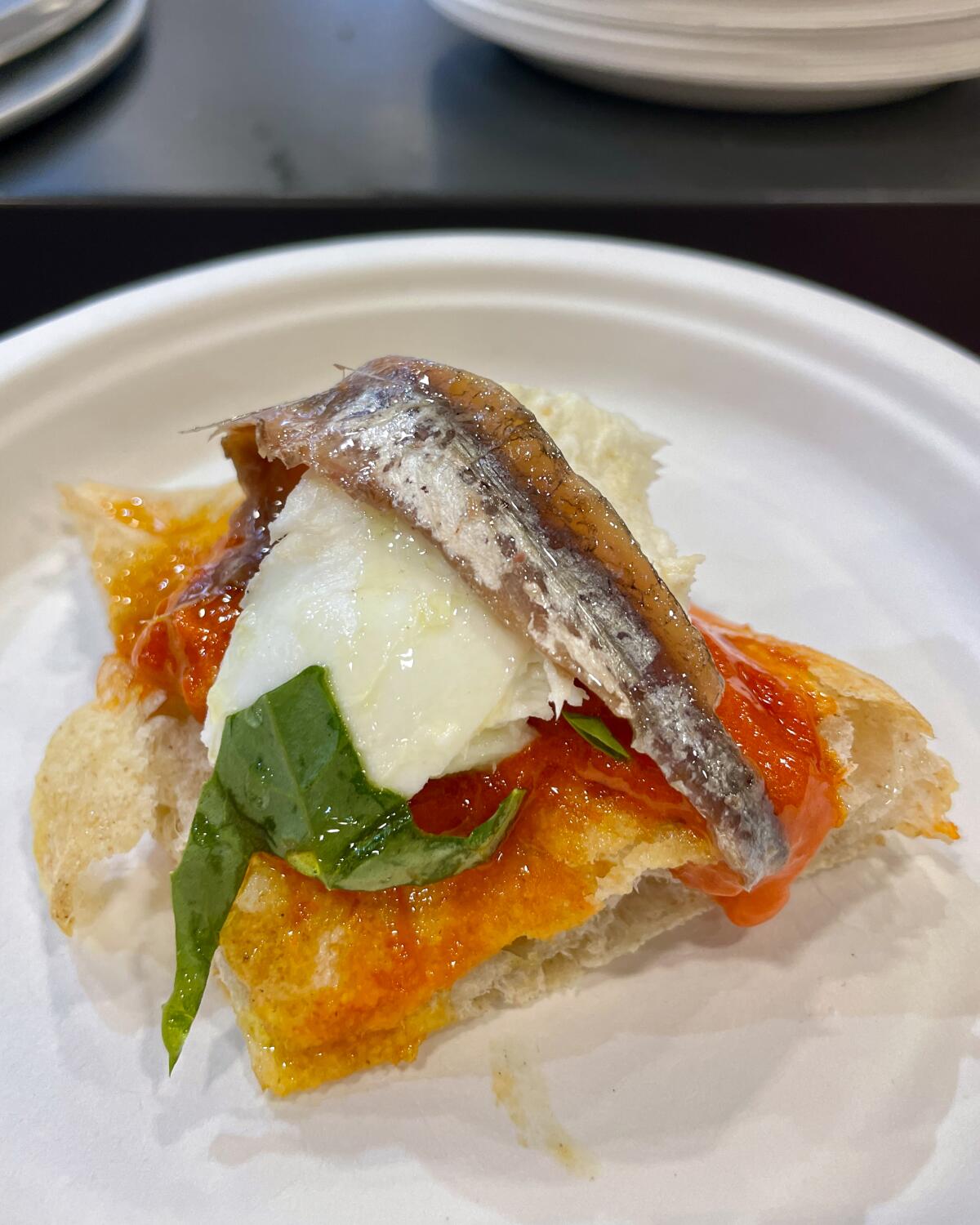
A slice of focaccia spianata with crushed crema di nduja, San Marzano tomatoes, herbs, mozzarella di bufala, anchovies and fresh basil from Daniele Uditi at the 40th annual International Pizza Expo in Las Vegas.
(Jenn Harris/Los Angeles Times)
A crowd forms around the stand with people eager to try Uditi's new creation. They bombard him with questions.
“Why is the dough so dark?”
“How did you get that texture on the crust?”
“Exactly how long is your test?”
He responds generously to everyone.
Their spianata focaccia is a long, stretched dough made with multigrain flour. The crunch of crunch in the crust is audible, giving way to a slightly chewy but mostly airy center.
“These long focaccia are the precursors of pizza,” he says. “Pizza comes from focaccia. “It’s basically flatbread.”
As soon as the focaccia spianata comes out of the oven, the wide, bubbling surface is filled with hand-crushed San Marzano tomatoes and crema di nduja, a spicy meat pasta that he makes himself. He then layers slices of Latteria Sorrentina mozzarella di bufala. It has a milky, fermented flavor that Uditi wouldn't dream of ruining by baking the cheese. He tops the pizza with anchovies, then tosses the pizza with fresh basil and drizzles it with a little Muraglia olive oil.
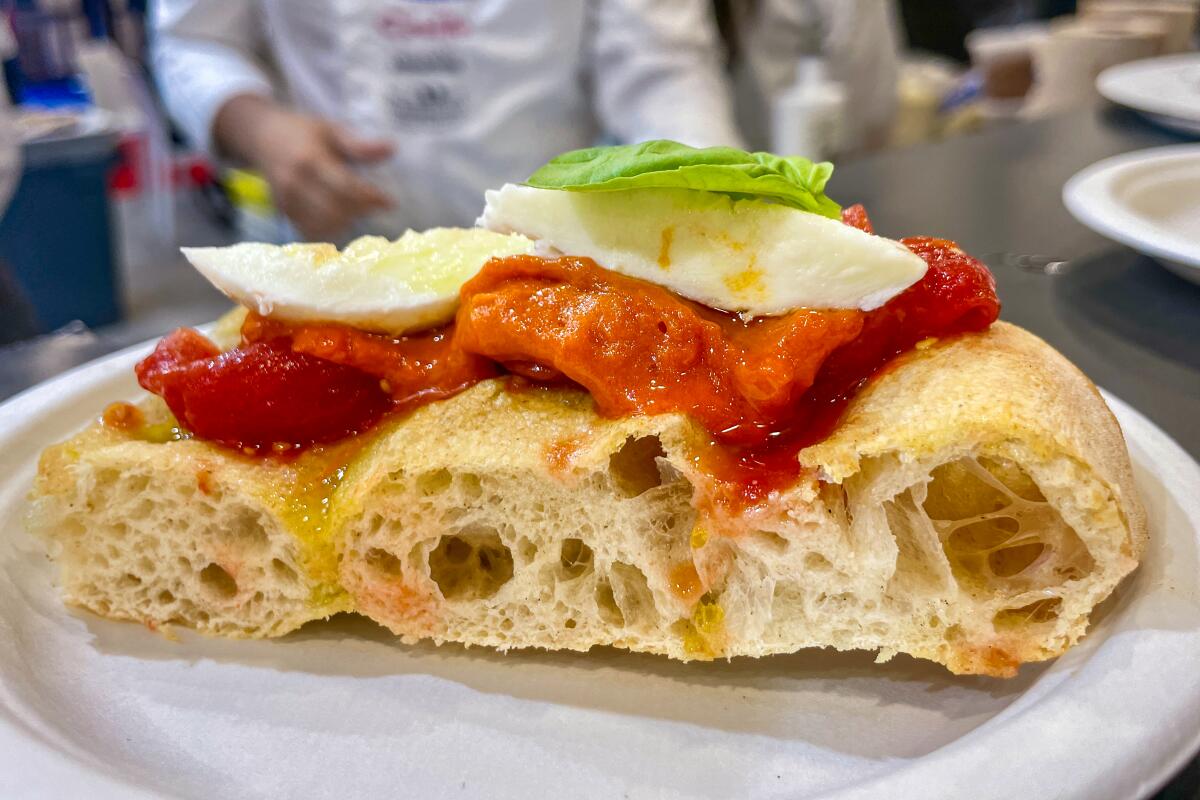
A slice of focaccia spianata made by Daniele Uditi at the 40th annual International Pizza Expo in Las Vegas.
(Jenn Harris / Los Angeles Times)
“We also used to make friselle, twice-baked dough, to preserve the bread for the long term,” he says. “But before baking the second time, we used some for breakfast because we wanted it to be softer. We put mortadella inside. “Just hot bread with mortadella and cheese.”
That children's breakfast is the base of his spianata focaccia with mortadella. Split the bread while it's still smoking, the heat intensifies the meaty flavor of the mortadella and simply melts the stracchino cheese. It's incredibly simple and has all the ingredients of a great Italian sandwich.
“A lot of people are focusing on things like cheese and all that Instagram stuff,” he says. “I'm a little tired of it. “I want ingredients and things that are made the way I used to eat them when I was a kid.”
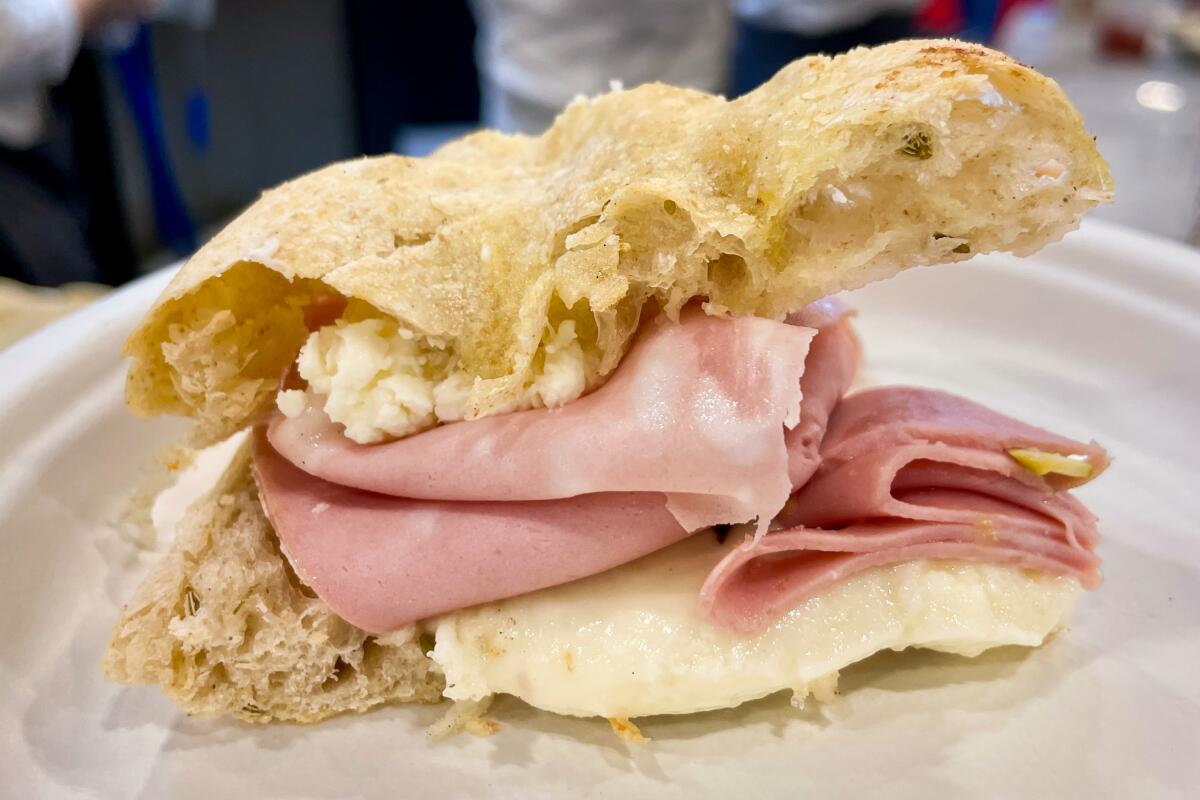
Spianata focaccia divided and stuffed with mortadella and stracchino made by Daniele Uditi at the 40th annual International Pizza Expo in Las Vegas.
(Jenn Harris / Los Angeles Times)
Some of those ingredients include Luigi Rega's Tomatoes Agriconserve Rega, a jar of pienolo tomatoes that hang on the vine for a year and taste like caramel.
Uditi plans to feature the focaccia during planned pop-ups and eventually open a dedicated focacceria.
“I want to give people a mental connection to focaccia because I'm tired of hearing people say something was better in Italy,” he says. “When you're on the Amalfi Coast, you open the window and you have the Gulf of Naples there, even a bad quality pasta dish tastes delicious. How do I compensate for that? Of course, my beautiful accent and these amazing ingredients.”

